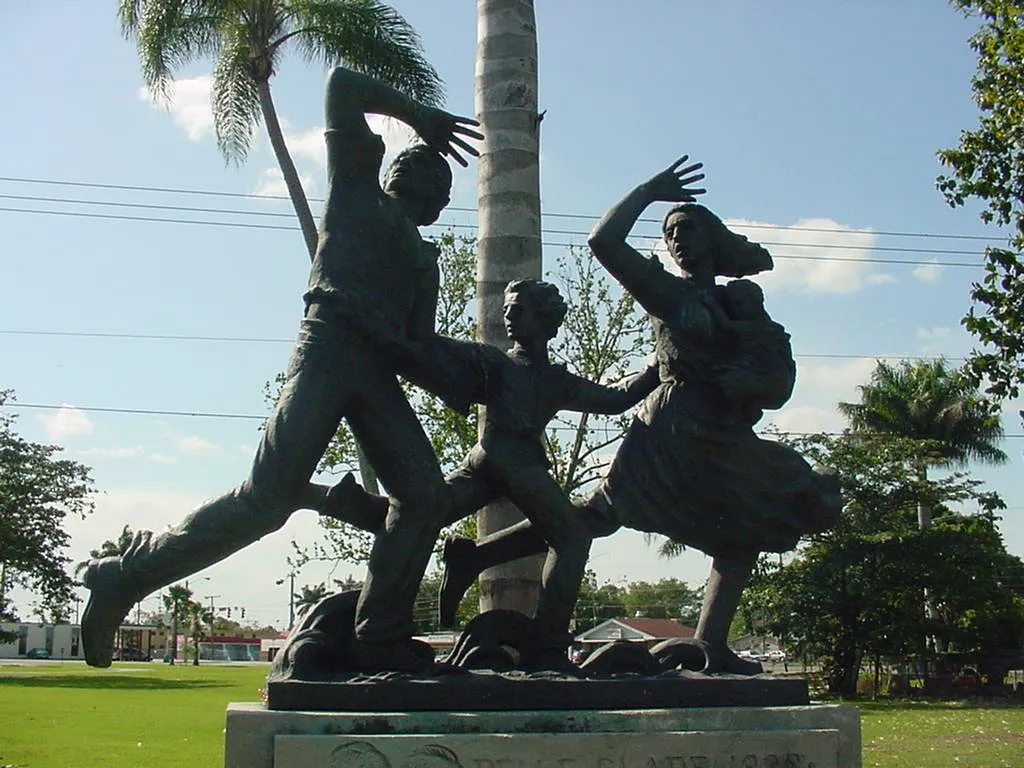Texans are dealing with the aftermath of hurricane Harvey. Powerful hurricanes have impacted Floridians on multiple occasions.
The hurricane of 1928 was particularly devastating to residents of south Florida.
“When you talk about Florida, you have to talk about hurricanes,” says Eliot Kleinberg, author of the book “Black Cloud: The Deadly Hurricane of 1928.”
Kleinberg first heard about the hurricane of 1928 while working as a reporter for the Palm Beach Post. “In 1988, for the sixtieth anniversary of the storm, I was sent out to Belle Glade to cover a commemorative event. The more I talked to these people, I said, how is it possible that this profound hurricane happened and most of the world doesn’t know anything about it?”
The 1928 hurricane played a pivotal role in Zora Neale Hurston’s 1937 novel “Their Eyes Were Watching God.” The storm leads to tragedy for the novel’s protagonist, Janie Crawford, while she and her lover Tea Cake are living as migrant workers in the Everglades.
“People have no idea that the hurricane in Zora’s book was a real hurricane,” says Kleinberg. “She takes some literary license with the hurricane. She gives it 200 mile per hour winds and she describes a gigantic tidal wave, which isn’t exactly how it happened. It was more like a slow and steady rise, but in talking about the hurricane and its effect on black people, the migrant workers in the glades, she was spot on.”
Today, meteorologists armed with satellite imagery track every movement of a hurricane for weeks before landfall, providing multiple models of possible paths a storm might take. In 1928, storm forecasting was not as sophisticated.
“As remarkable as it is to imagine now, back then hurricanes would travel through the ocean for days before anyone knew they existed,” says Kleinberg. “In the case of this storm, a ship in the eastern Caribbean came across it, and telegraphed about the storm.”
The hurricane tore through the Caribbean islands, killing as many as 2,000 people in Puerto Rico alone. The night before the hurricane struck Florida, weather officials were saying that the storm was not going to hit the state. It made landfall near West Palm Beach on September 16.
Even if good information had been available, it might not have made a difference.
“To say that they knew or didn’t hear the hurricane warning presumes that they had a radio, which in 1928, a lot of people didn’t, and there certainly wasn’t any television,” says Kleinberg. “A newspaper is only as good as its deadline, which is 12 to 15 hours. Even if they knew, where could they go?”
The people living in isolated little towns around Lake Okeechobee had very few options as the lake swelled and flooded the surrounding area. A person would not want to head east, into the storm, and roads heading west and north were difficult to travel in good weather conditions.
“This presumes you had a car, which in 1928 wasn’t a given,” says Kleinberg. “They really, literally, had nowhere to run.”
An estimated 2,500 Floridians were killed by the 1928 hurricane, and a disproportionate number of those people were African American. After the storm, white victims and black victims were treated very differently. For health reasons, all of the bodies had to be quickly placed into mass graves.
“They took all of the white victims and they put them in a mass grave in the City Cemetery in West Palm Beach, let family members try to identify them, tag them, but 674 black victims were literally just dumped in a hole,” says Kleinberg. Black families were not given the same consideration, and many don’t know if their relatives were dumped in the mass grave or not. “The other great tragedy is that for the next 60 years, the grave was unmarked.”
The nearly 700 black victims of the hurricane were forgotten, as a road was rerouted over part of the unmarked mass grave at what is now the corner of Tamarind Avenue and 25th Street, about two miles northwest of downtown West Palm Beach.
“If this hurricane had smashed a black tie affair in Palm Beach, they’d still be talking about it,” says Kleinberg.

